Detroit Month of Design 2021 Highlights
An extensive roster of exhilarating events across the Motor City this September

In December 2015, Detroit became the first UNESCO-designated city of design in the United States. The honor recognizes metropolitan areas with a defined design heritage (often pertaining to an influential industry or built environment) and an active contemporary culture that continues to nurture artisans and designers. Six years later, Detroit remains the only certified design city in America—and extensive, exhilarating events like Detroit Month of Design explain why.
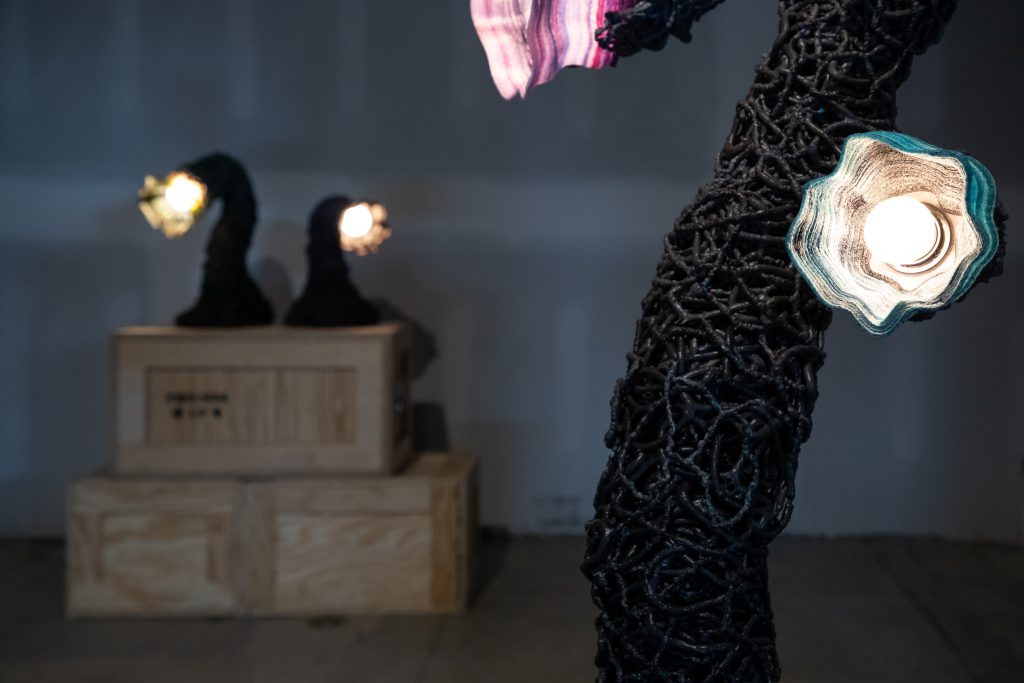
Organized by the Design Core Detroit, this citywide network of marquee openings, intimate studio visits, provocative installations and artistic interventions engages the local community and offers future-forward urban solutions. This 11th edition, the largest yet, weaves disparate neighborhoods together and couples emerging artists and designers with established institutions and fledgling exhibition spaces. But the ambitious cross-disciplinary itinerary and its diverse roster of programming do not just connect the dots between the city’s talent for the sake of a party.
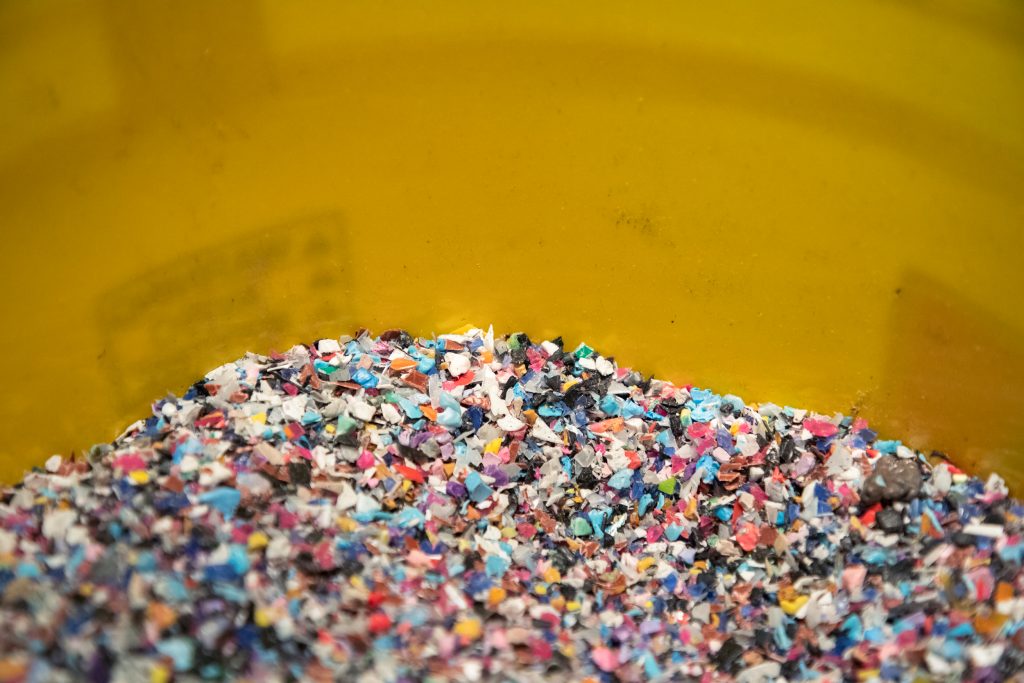
“I want more than a celebration,” Kiana Wenzell, director of Detroit Month of Design, tells us over lunch at Baobab Fare. “I want designers to come to the festival ready for business, ready to meet new customers. That’s real change.” Olga Stella, executive director of Design Core Detroit, adds, “There is this idea behind it all, of connecting sponsors like Gucci Changemakers and Foot Locker to Black and Brown and women talent across the city, then providing them mentorship and coaching.” It’s an educational training opportunity; in many cases, it’s a first big commission.
I want more than a celebration. I want designers to come to the festival ready for business.
From the City of Design Competition Neighborhood Showcase (which debuts installations based on concepts that were proposed for a challenge in 2019 that tasked participants with making Detroit safer) to a tour of the resources within the Julian C Madison Building for the Celebrating Detroit’s Black Urban Planners event, inclusivity and the entrepreneurial spirit intermingle. As we traversed the Motor City mid-month, to attend experiences in historic parks and converted elementary schools (and to drink and dine and rest amidst the charms of The Siren Hotel), we came away with several highlights, outlined below, but perhaps the greatest highlight of all was speaking to Detroiters, both eager participants and excited attendees, who look forward to Detroit Month of Design’s growth each and every year.

Morphogenesis at NEXT:SPACE
A mind-bending collision of material and form, meaning and process, Detroit/Chicago-based designer Cody Norman’s Morphogenesis exhibition comes to life amidst the rough walls of what will be the NEXT:SPACE design gallery. Norman produced the organic forms on display by processing recycled plastic through old 3D-printing robots in Pontiac, Michigan.
“I am creating work that operates on my terms in its own imagined world,” Norman tells us, pointing out the textures of each creation. “I imagine this post-collapsed landscaped where plastics have begun to amalgamate into a new species.” These organisms, some equipped with lightbulbs, feel both of the Earth and otherworldly.
Isabelle Weiss, director of NEXT:SPACE, has championed Norman and his experimentation for years. She founded NEXT:SPACE in 2014 to spotlight producers of pioneering but functional objects. Norman’s work certainly aligns with this mission.

Stickwork
In Detroit’s Brightmoor neighborhood, the 250-acre Eliza Howell Park has welcomed guests since it was bequeathed to the city in 1936. Though the city reduced its management of the greenery in 2009, artists and organizations—including Sidewalk Detroit—have stepped in to ensure its future. For Detroit Month of Design, Sidewalk commissioned Stickwork artist Patrick Dougherty to weave a wondrous, artistic wooden structure into its trees.
“Sidewalk Detroit was really excited to bring Patrick Dougherty to Detroit because we’ve been working in Eliza Howell Park for the past five years, focusing on infrastructure improvement—like stormwater management, way-finding, seeding, signage, all that,” Ryan Myers-Johnson, founder and executive director of Sidewalk Detroit, tells us as we stroll through the verdant destination. “The vision is to bring people back to this park and reconnect them with nature. We wanted to find an artist who had a community process where people could take part in the building of the sculpture and have access to the artist, as well. We also wanted to have a work that was environmentally friendly and worked with the natural landscape.”
During our tour of the site, Dougherty and a team of workers and volunteers were building the infrastructure of the forthcoming sculpture. Doughtery works for three weeks, eight hours per day, on his landscape interventions. With this one, 200 to 300 volunteers will join in to assist. First, he builds a ground plan, in this instance with little rooms and outward wisps. Then, “The first three days are for gathering,” he tells us. In Detroit, the team collected materials from other local parks, including those on Belle Isle.
“The rest of the time is spent constructing,” he says. “The actuality emerges as we work. Though we are real clear about the ground plan that we make, the upper reaches of it are serendipitous. We look at what we are doing and ask, ‘How can we maximize this?’ There’s a reactivity to it. We want variation in its movement. This gives the sculpture a lot more excitement to it.” The large-scale, family-friendly work will be complete for 25 September.

Discard Detroit
In a gallery on the ground floor of the Cass Avenue WeWork, the Discard Detroit exhibition finds artist Mike Han, curator Lisa Sauve of the multidisciplinary practice Synecdoche Design and photographer Ryan Southen probing the line between art and design. With his signature artistic style, Han embellished several once-discarded mid-century modern furniture pieces, making them unique and initiating questions of value and authorship.
Han once asked, on a whim, if he could paint a Noguchi table of Sauve’s—and she said yes. “As I was painting it, she said she had more for me to do,” he explains. “They were really personal items that became transformed. This collaboration required a level of trust.” Sauve continued to find pieces which were often abandoned, with previous owners likely unaware of their prescribed value.
“We are seeing this idea truly become the expression that we wanted,” Han continues. “These things that were relegated to storage, they have now been given a new life. They are being cherished and seen in a way that has more value than they did prior. It’s ridiculous because these are icons.”
“How do you incorporate an aesthetic or your voice onto something that is well designed?” he asks, noting that, “We found there’s an element of time that changes value. Once it shifts to the point where they’re no longer cherished, we’ve changed them to reintroduce the idea of being complete, whole again.” Comedically, both Han and Sauve have different ideas on how to address the works: Han tells people not to sit on them; Sauve sits on almost all of them.
To complete the exhibition, Southen (the owner of the Barcelona chair in the exhibit, who pulled it up from his basement) took photos of the modified furniture this February and March. These images hang from the walls. One photo in particular—of the table and chairs in a small, shoveled-out circle surrounded by snow in Detroit’s Hart Plaza—captures the spirit of the collaboration. Not many people know that Noguchi designed Hart Plaza. There, outside in downtown Detroit, the masterful designer’s table finds new life and greater context.
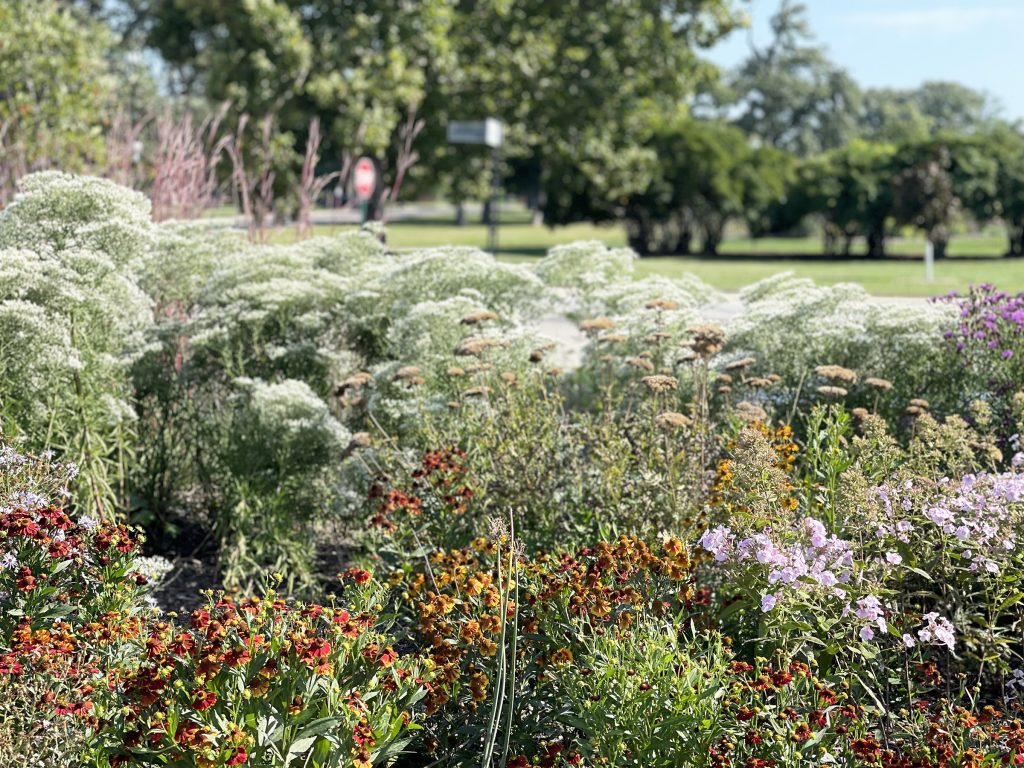
Oudolf Garden
Sprouting between several monuments dedicated to peace (and other tranquil attributes of the public park on Detroit’s Belle Isle), Oudolf Garden is the latest artistic, ecological attraction. During Detroit Month of Design, Oudolf Garden welcomes guests to free guided tours—but the area will remain open to the public afterward. That was its intention from the beginning, when several individuals decided in 2013 that Belle Isle needed support.
Maura Campbell, one of the garden’s organizers from the beginning and its thoughtful spokesperson today, explains that to bring the acclaimed Dutch garden designer Piet Oudolf to Detroit, they began by writing him a letter. It began, “This is a love letter from Detroit.” That was in 2016 and the designer visited not long after, to determined where his garden would grow. It has been in development ever since, only recently opening.
“His gardens attract so many people,” Campbell tells us as we pass through contrasting and complementary rows of flora. “Also, guests are looking at this whole area differently now. It’s helped them notice things for the first time. It’s doing exactly what we hoped it would do. Oudolf truly is a designer and an artist—and this is such an intentional landscape.”
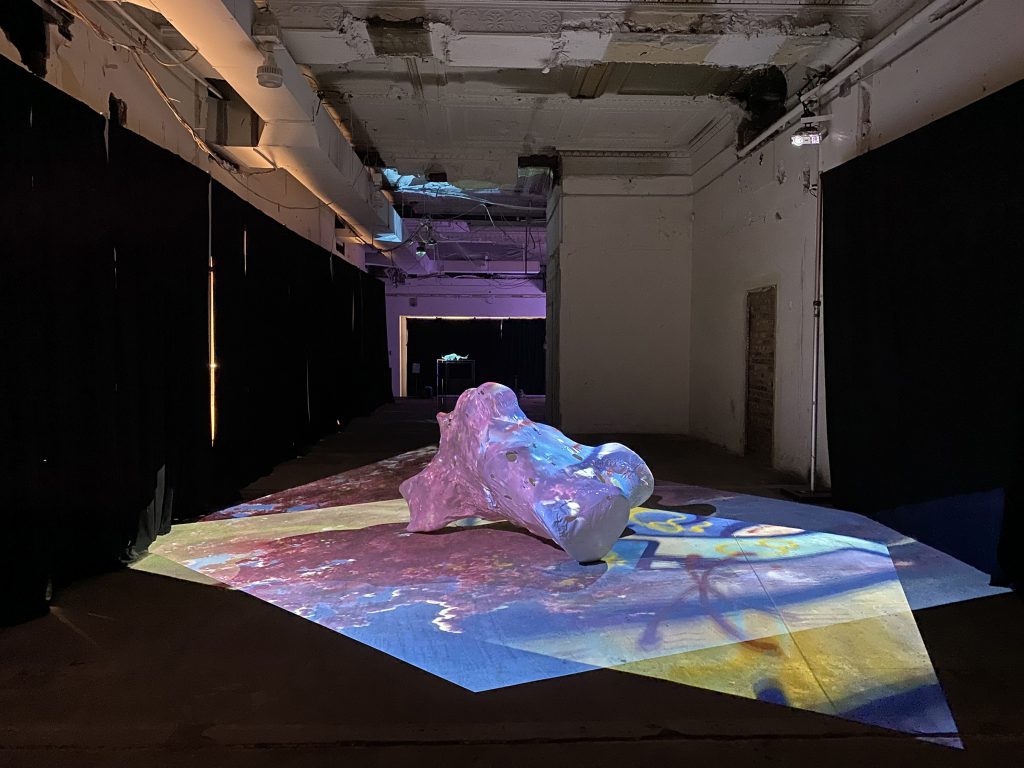
Moments of Immersion
Detroit-based artist Yazmin Dababneh’s multi-work Moments of Immersion solo exhibition explores the relationship between static sculpture and moving projection, as well as how they can be used together to create something even more evocative. Surprises abound and each work requires peeking into, looking behind or glancing beyond. One filmic work, which is, in fact, a recording of the process behind another art piece, asks viewers to remove their shoes for a sensory voyage across memory foam.
“I started out with two-dimensional work and then found glass and was mesmerized by the material,” Dababneh tells under a flickering glow on site. “I decided to start working sculpturally. I sort of started playing with the optical qualities of glass and light and projection. But, when COVID happened and I lost access to glass production studios, it forced me to start thinking differently. I would have gotten here eventually, but the pandemic pushed me into this weird, exploratory realm.” Ambient music aligns with the visuals and a moody, cohesive atmosphere swathes them all.

Collected Detroit
It was within Collected Detroit gallery that we stood in awe of (and beside) the 94-year-old artist Artis Lane, and her sculpture of Rosa Parks ascending stairs, at the opening of her current exhibition, Steps Toward Justice: Artis Lane’s Portraits of Rosa Parks. This comprehensive show not only includes portraits and sculptures drawn from Lane’s illustrious career but also offers a glimpse into her personal design process.
Lane—perhaps best known as the artist whose bronze bust of Rosa Parks (who she was friends with) was selected for President Biden’s Oval Office—portrayed many other influential figures in her paintings and sculptures, as well. Through the expansive curatorial efforts, and numerous experiential activities on site, the exhibition aims to help attendees understand the artist as much as the art she produced. Steps Toward Justice will run at Collected Detroit through 23 October.
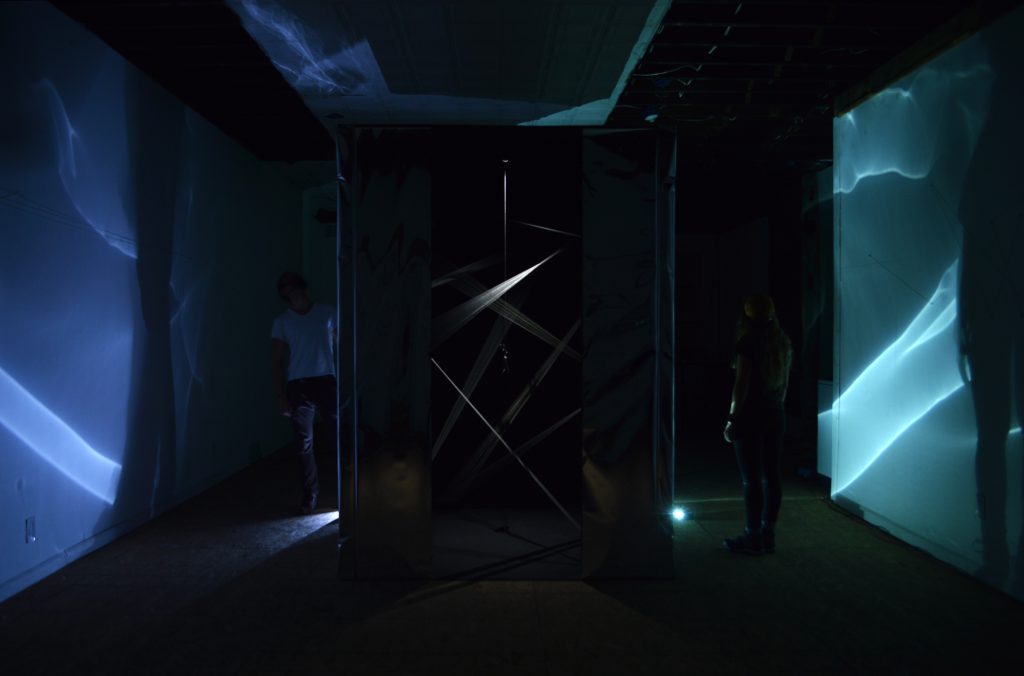
Finding Identity
After sunset, we found (and others should continue to find, for their own enlightenment) the Finding Identity installation at Durfee Innovation Society, which occupies a former elementary school. Atop the school’s filled-in swimming pool, Reinhardt Swart and Patrick MacBride (lighting designers by trade at SmithGroup) assembled an experiential mylar structure that must be explored in the dark, with the assistance of very small, handheld flashlights.
“This conception started two to three months into COVID,” Swart tells us, after we’d all traipsed across the solid pool and marveled at the reaction of our handheld lamps upon the artifice—mimicking the caustics of light upon moving water. “Patrick and I were roommates at the time and working from home. We were looking for an outlet to express ourselves in some way. We were brainstorming what this period means and kept coming back to this idea of lost time.” Their artwork began with a string and scissors—still a central part of the concept today—and expanded as they began to process what it means to be disassociated from days of the week, their universal order and uniquely personal meanings.
The installation grants guests a strange sense of control, set into expectations of the unknown, as they amble through the room that houses the pool. Swart DJs the music behind it all. Although it functions on a deeply cerebral level, it can be enjoyed by anyone interested in exploration.
Hero image by David Graver











